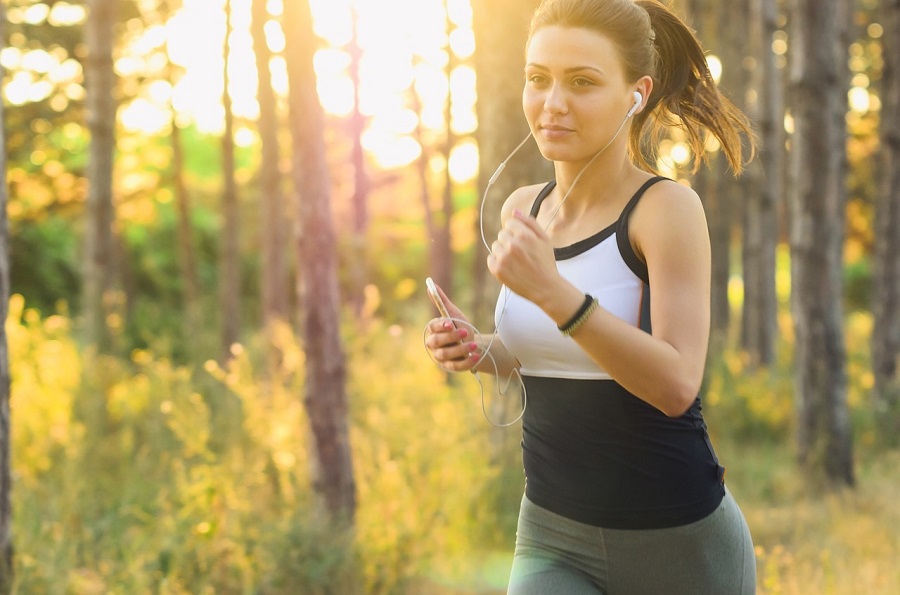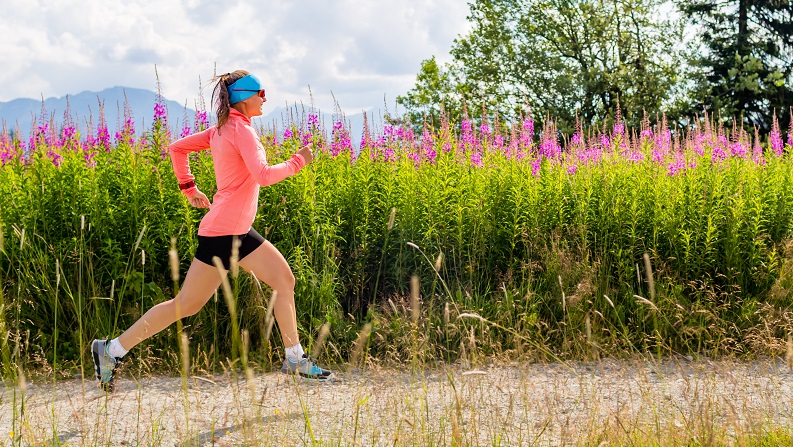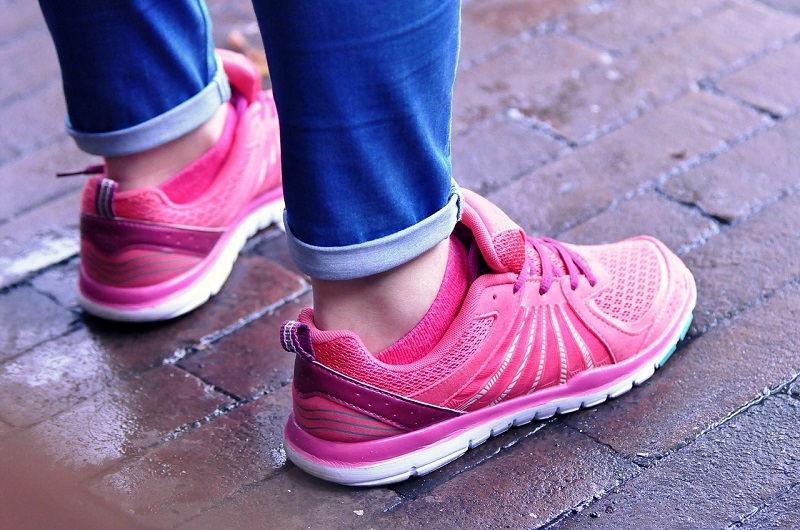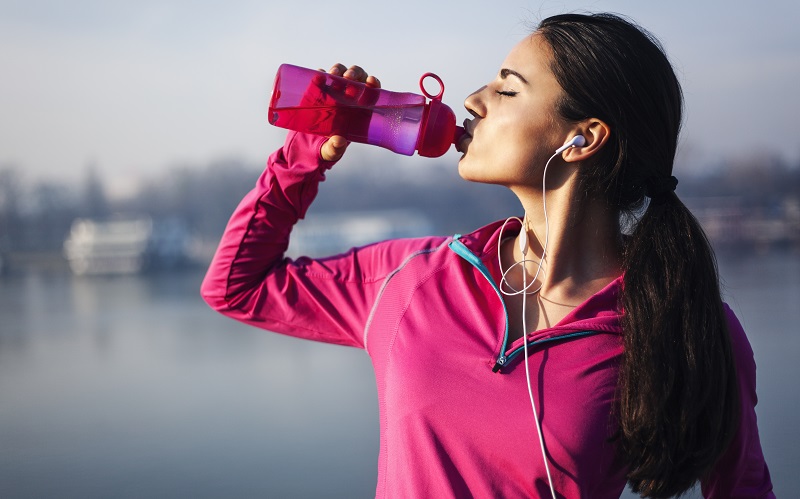
Our Editors independently research, test, and rate what we feel are the best products. We use affiliate links and may receive a small commission on purchases.
Trail running is some of the most fun you can have, while getting in an amazing workout and enjoying Mother Nature. However, it’s not like running anywhere else. With that, there are some things to take into consideration before you head outside. I’ve taken my own experience along with advice from pros to bring you the top tips for running on the trails so you’re successful in your endeavors!
1. Get the Right Equipment
Just like with any other type of running, you need to find what works for trail running. You want clothing that isn’t going to get caught on things like shrubs or branches, but still allows for excellent airflow and wicks moisture away from the body. I personally enjoy running leggings for trail use as they offer a nice amount of compression yet feel as if they move with my body.
Depending on how cold and well-shaded your trail of choice is, you may want to bring along a jacket as well just in case. You’re not likely going to have access to any water fountains nearby once you’re out there, so make sure you bring along your own water. I love using hydration packs as they are worn like a lightweight vest that you can also store other essentials in. I also find that they’re overall much more convenient to use as opposed to a leaky/fussy water bottle.
2. Get the Right Shoes
I’m going to place trail running shoes all on their own because they’re that important. If you have the wrong type of shoes on, you’re putting yourself not only at an athletic disadvantage, but can actually put yourself at a higher risk of injury!
Think about it: you’re not just running on flat, predictable ground like you would on a treadmill or road. Trail runs can involve anything from light gravel to slippery rocks, sticky mud, twigs, roots, and much more! To protect yourself from these potential obstacles and keep you stable, you need a more robust shoe.
However, there are plenty of runners who prefer minimalist shoes with a more “natural” feel and grip. There’s no “better” choice here – it all comes down to personal preference.
I like lower profile models as they minimize the risk of rolling ankles, which is important when you’re running on muddy, wet, or uneven trails. Once you’re done using them, make sure to wash off any mud and/or moisture that may have dirtied your shoes as it can cause them to break down quicker.
The heels should be snug (but never too tight) and eliminate wiggling around yet the toe box should be nice and roomy and allow for a full toe splay.
3. Protection
This may not be something you think of as much as you would out on an open track or road, but sun protection is equally – if not more – important up on a trail. There are plenty of clothing brands and types that offer SPF built in, but sunscreen, lip balm, a cap, and sunglasses will all help to ensure your safety from the sun’s harmful rays.
If you’re going to be running really early in the morning or at night, you absolutely need a headlamp. This is not only to make yourself visible to others, but to give you a clear view of your surroundings and the trail in front of you. You may see some runners who use a flashlight in addition to their headlamp, but that is just personal preference. I like having both, with the headlamp set on wide flood setting and then using the handheld flashlight to check what’s around me quickly.
4. Select Your Trail
Your first trail run will undoubtedly be one to remember. However, when you’re planning, make sure you know that a trail is going to take you longer to complete than a road run would. So, even though it may be just as long, it’s going to be more challenging due to the rougher terrain and winding trails that will force you to use your muscles more.
If you’re just starting out, try to locate a trail that’s relatively flat and free of large debris. Local rods and dirt trails can be an excellent choice, along with state parks which use gravel roads. There are also plenty of resources such as online guides that will let you search by difficulty, distance, elevation gain, and much more.
If you’re still looking, check out local running clubs! They often know the ins and outs of the city, where the best views are, what’s ideal for which experience level, etcetera. Along with that, you’ll be able to socialize and hopefully make some lifelong friends from your club!
5. Trail Running Techniques
Techniques are going to change a bit along with the trails. Here are some basic go-to tips:
- Use a short stride, keeping feet underneath your body at all times. This will help you keep balanced on uneven or unpredictable terrain.
- Keep eyes looking down, scanning the trail every 10 feet (more or less) in front of you to keep obstacles out of your way. However, don’t look straight down at your feet as doing so can easily lead to tripping. You can definitely check out nature, but slow down and walk to do it.
- Keep balanced and relaxed by swinging your arms and keeping them loose. Don’t hunch your shoulders over, though.
- Shorten your stride even more when going up hills, creating short yet more frequent steps. Keep your back straight, as hunching forward can make it more challenging to effectively breath in and out.
- If you’re feeling exhausted, you can always simply switch to walking! Walking is easier on the joints and will still get you in a great workout. Walking is a great way to “take a break” while running anyway.
6. Poles
Many people enjoy trial running with poles. Poles can lower the amount of stress on the knees and hips while helping you burn more calories! Some are even compatible with road use as well, so you’ll really get a lot of use out of them.
They can help you build strength in the core and upper body, though another way to do that would be with strength training exercises. Single-leg squats, brides, lunges, dips, deadlifts, etc. are all great exercises for developing the muscles and improving mobility.
Summary
Now that you’ve had the chance to read all about the best tips for running on trails, do you have a deeper understanding of how to go about starting? We hope that they’ve been able to help you sort you out and that you feel ready to take the outdoors by storm. Thanks for tuning in, and we’ll see you again soon! Remember to have fun and stay safe!




